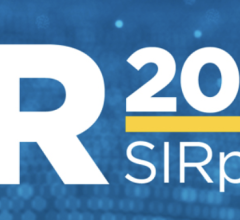March 26, 2014 — The U.S. Food and Drug Administration (FDA) granted 510(k) clearance for three new digital angiography systems from Shimadzu Medical Systems. These are the ceiling-mounted Trinias, the floor-mounted Trinias, and the biplane models.
All systems incorporate Shimadzu's ultra-high speed Score Pro image processing technology, one of many features oriented toward workflow efficiency. Shimadzu’s Smart Design delivers the intuitive functionality required to respond instantly to physician and operator commands. The Shimadzu Score Imaging process dramatically enhances the fluoroscopic image while maintaining ALARA (As low as reasonably achievable) dose considerations.
Designed as an angiographic interventional system, Trinias offers a new 12-inch Crossover flat panel detector for multi-procedure versatility that accommodates any type of angiography procedure. Combined with Score Pro image processing, the systems provide excellent visibility and numerous image guidance functions, as well as sophisticated 3-D application techniques. Real-time performance is optimized specifically for increasing patient throughput, minimizing cost, and improving patient outcomes.
Designed also as a cardiac interventional system, Trinias is equipped with a new 8-inch flat panel detector for cardiac-suited procedures as well as neuro exams. Score StentView can provide users improved visibility of existing stents in vessels.
Elements of Score imaging include:
• Score Pro – A next-generation of image processing that provides optimal imaging by a real-time evaluation of noise, devices and anatomy found in both fluoro and acquisition images. The software then determines the best image quality by optimizing devices and anatomy while eliminating noise. Shimadzu's image processing assures excellent patient outcomes, reducing or eliminating the need to perform repeat procedures that would expose the patient to additional radiation dose.
• Score RSM – This is an exclusive Shimadzu feature that allows for 100 percent motion correction during an acquisition. A 70 percent DSA image allows for anatomical accuracy during interventions, a reduced contrast and X-ray dose due to motion correction, and the highest resolution of any acquisition mode. This is done in real-time, eliminating the need for post-processing and improving throughput.
• Score StentView – This feature specifically supports percutaneous coronary intervention (PCI) procedures. It enables the display of stents in a fixed position in real-time, which makes it easier to assess potential relationships between overlapping stents or when re-expanding a stent using a balloon. A real-time application now uses DICOM images and requires no special post-processing workstation. This saves valuable room space and creates a real-time interventional environment for physicians and staff at tableside.
• Score 3-D – This application uses Shimadzu advanced C-arm design and 60 degree per second rotation to acquire 3-D images in a matter of seconds. Multiple workstation features allow the user the flexibility to view the images as fly through, semi-transparent, or with any angle of images necessary to optimize patient outcomes.
• Score CT – An application for observing cross sectional images of low-contrast procedures, such as tumor stains, visceral anatomy, neuro-interventional planning, and more. A complete system package, which demonstrates sagittal, axial and coronal slices within seconds, completes the interventional lab with ease-of-use- operation. Shimadzu's C-arm design allows for the good image quality due to a G-force structure, which eliminates image distortion due to motion.
The systems have data mirroring and redundant filaments to ensure procedure continuity. The Score Imaging is designed for improved outcomes at the least amount of dose.
The Trinias family is designed with ergonomics and ease of use and access in mind. Each system's design has been created to meet the demands of a cath lab with such features such as a triple pivot, a six axis in line C-arm mount and a multi-insertion ceiling suspended C-arm.
The Trinias angiography systems were shown as works-in-progress at the RSNA 2013 annual meeting in Chicago. Shimadzu dealers in North America and the Caribbean are currently accepting orders.



 July 25, 2024
July 25, 2024 








